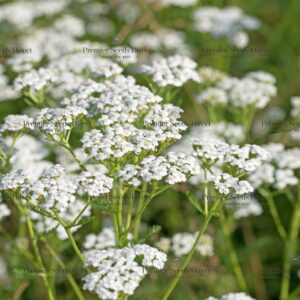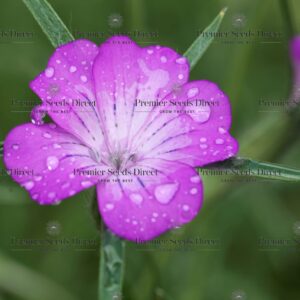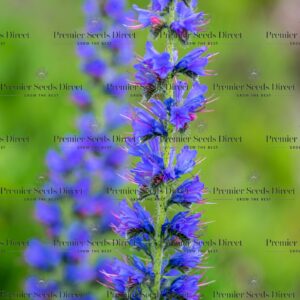Wildflower Meadow de Lux mix – 50 varieties
£2.09
A stunning fast growing brightly coloured mix of meadow annuals and perennials which will provide good colour from the cornfield annuals in the first season whilst the other species establish for the following year.
Wildflower Meadow de Lux Mix – 50 Varieties (100% flower seed – no grass )
Wildflower Meadow de Lux mix 10 Gram Seeds – Sowing rate 1-2 Gram per Square Meter.
A stunning fast growing brightly coloured mix of meadow annuals and perennials which will provide good colour from the cornfield annuals in the first season whilst the other species establish for the following year.
Achillea millefolium white, wild form 70 cm
Adonis aestivalis scarlet 30 cm
Anthemis tinctoria golden yellow 70 cm
Artemisia vulgaris 120 cm
Barbarea verna yellow 50 cm
Bellis perennis white, wild form 10 cm
Calendula arvensis orange 15 cm
Calendula officinalis orange single, wild form 50 cm
Capsella bursa pastoris white, wild form 40 cm
Centaurea cyanus blue, wild form 80 cm
Centaurea jacea pink 70 cm
Chelidonium majus yellow 60 cm
Chrysanthemum leucanthemum white, wild form 60 cm
Cichorium intybus blue, wild form 100 cm
Coronilla varia L. pink 40 cm
Daucus carota wild form 80 cm
Consolida regalis blue 70 cm
Dianthus carthusianorum purple red 40 cm
Digitalis purpurea rose shades, wild form 120 cm
Echium vulgare blue 80 cm
Filipendula ulmaria creamy white 120 cm
Galium mollugo white 80 cm
Galium verum yellow 60 cm
Hesperis matronalis fiolet 90 cm
Hypericum perforatum golden yellow, wild form 60 cm
Linum perenne blue 40 cm
Lupinus perennis blue 70 cm
Lychnis flos-cuculi pink 40 cm
Lythrum salicaria carmine pink 90 cm
Malva moschata pink 70 cm
Malva sylvestris fiolet 100 cm
Matricaria chamomilla wild form 30 cm
Matricaria inodora white 50 cm
Medicago lupulina yellow 20 cm
Myosotis arvensis blue 25 cm
Nigella sativa 40 cm
Oenothera biennis yellow 80 cm
Onobrychis viciifolia pink 60 cm
Papaver rhoeas red single, wild form 70 cm
Pimpinella anisum 50 cm
Plantago lanceolata 50 cm
Plantago major 30 cm
Polemonium caeruleum blue 70 cm
Potentilla argentea yellow 25 cm
Ranunculus acris yellow 60 cm
Rumex acetosa 50 cm
Rumex acetosella red single, wild form 30 cm
Salvia pratensis blue 60 cm
Sanguisorba minor 50 cm
Saponaria officinalis 70 cm
Silene vulgaris white 40 cm
Tanacetum vulgare yellow 80 cm
Taraxacum officinale 30 cm
Trifolium incarnatum carmine 60 cm
Pratense Trifolium red 50 cm
Repens Trifolium 15 cm
Valeriana officinalis 80 cm
Verbascum sp. mixed species 150 cm
Viola tricolor violet and yellow 15 cm
Cultivation advice Wildflower Meadow DE-LUX Mix – 50 Varieties
(Attached images are of a generic wildflower meadow and will vary by season and conditions)
- Wildflowers will always perform best on ground that is not highly fertile as this will allow them to compete with background weeds.
- The correct ground preparation is essential for success. For a new display / sowing the seed bed needs to be cleared of all weeds by repeated cultivation or a herbicide and left for at least 2 weeks for newly exposed seeds to germination before repeating the process at least twice.
- The ground should be a medium tilth for sowing and tread down or rolled to provide a firm surface.
- Sowing is ideally undertaken when the soil is warm and moist in early autumn or spring ( Apr ? Jun).
- The seed must be surface sown evenly and sparingly (1-2 gram per square meter), avoid the temptation to over-sow. Seed can be mixed with fine white dry sand which ensures a better distribution and allows you to see where it has been scattered.
- Do not cover the seed but firm in with a roller or by treading to ensure good soil contact
- Once you have sown the mixture, it is very important to manage the growth for the ? first year, which includes weeding any aggressive species that appear.
- If sowing amongst established grass, autumn will be best, first cutting back close to the ground and scarifying to expose base soil.
- Cut the sward when the grass gets established and keep it down to help the new seeds to germinate.
- If sowing in the spring, again keep the grass low for the first growing season.
- Whenever you cut, it is vital to remove all the material after allowing any seeds to spread to ensure nutrients are not added back to the soil.








